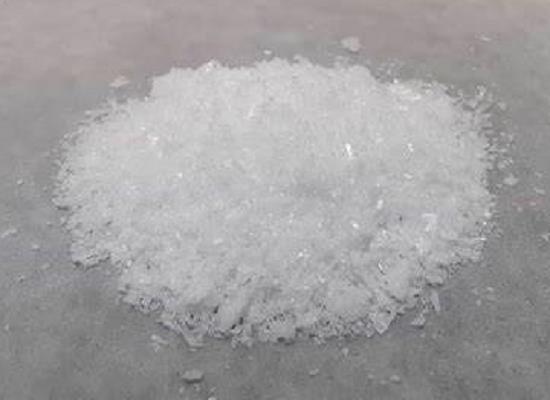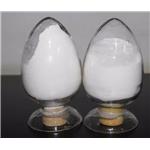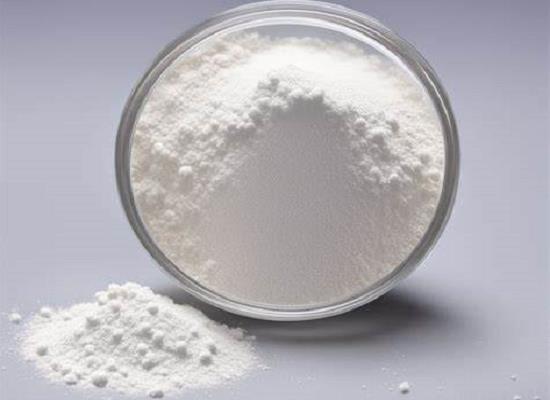Chromium Hexacarbonyl: Characteristics and Chemical Applications
General Description
Chromium hexacarbonyl is a coordination compound of chromium that consists of a chromium atom surrounded by six carbonyl ligands, exhibiting octahedral geometry and notable stability. It displays unique reactivity, particularly in substitution reactions and can function as a carbonylation agent. A significant application of chromium hexacarbonyl is in the novel colorimetric determination of 2-acetyl-1-pyrroline, an aroma compound in fragrant rice. This method produces a green product upon reaction and is validated by gas chromatography-mass spectrometry, offering a reliable and cost-effective means for quantifying aroma compounds, thereby enhancing analytical techniques in food chemistry.

Figure 1. Chromium hexacarbonyl
Characteristics
Introduction to Chromium Hexacarbonyl
Chromium hexacarbonyl (Cr(CO)₆) is a coordination complex of chromium, consisting of a central chromium atom surrounded by six carbonyl (CO) ligands. This compound is notable for its stability and distinctive molecular structure, which features octahedral geometry. The carbonyl groups are strong field ligands, leading to significant electron donation to the chromium center. Chromium hexacarbonyl is typically a volatile, yellow solid at room temperature, which can sublime at moderate temperatures. It is soluble in organic solvents like benzene and toluene but insoluble in water. As a precursor in various chemical syntheses, Chromium hexacarbonyl serves an important role in organometallic chemistry and catalysis, particularly in processes involving the conversion of alkenes and alkynes. 1
Chemical Properties and Reactivity
The chemical reactivity of chromium hexacarbonyl is characterized by its ability to undergo substitution reactions, especially with nucleophiles. Upon exposure to moisture, it can hydrolyze to form chromium carbonyl hydroxides, which can further react with other ligands to produce a variety of chromium complexes. In addition, Chromium hexacarbonyl can also be utilized as a carbonylation agent in the synthesis of various organic compounds, showcasing its utility in organic chemistry. Furthermore, due to its electron-rich nature, chromium hexacarbonyl can participate in reductive and oxidative reactions, making it a valuable compound in the development of new materials and catalysis. Its handling requires caution due to the toxicity associated with chromium compounds and the potential release of carbon monoxide. 1
Chemical Applications
Chromium hexacarbonyl is an organometallic compound that consists of a chromium atom bonded to six carbonyl ligands. This compound is recognized for its unique electronic properties and reactivity, making it useful in various chemical applications. One notable characteristic of chromium hexacarbonyl is its ability to facilitate reactions that can produce distinct color changes, a property that has led to its application in analytical chemistry, particularly in the development of novel quantification methods. Understanding how chromium hexacarbonyl interacts in chemical reactions is essential for designing effective protocols for detecting and measuring specific compounds in different matrices. 2
Application in the Determination of 2-Acetyl-1-pyrroline
A significant application of chromium hexacarbonyl is in the innovative method for quantifying the aroma compound 2-acetyl-1-pyrroline, primarily found in fragrant rice. Currently, no colorimetric methods exist for the detection of this compound, making the discovery of a technique utilizing chromium hexacarbonyl a breakthrough. In this approach, the reaction between 2-acetyl-1-pyrroline and a chromium hexacarbonyl reagent solution, when exposed to light, results in the formation of a green product. This color change can be monitored quantitatively, with a peak absorption wavelength observed at 623 nm. Such a method not only enhances the detection capabilities for 2-acetyl-1-pyrroline but also offers a practical solution for analyzing fragrance profiles in rice. 2
Validation and Effectiveness of the Method
The efficacy of the colorimetric method leveraging chromium hexacarbonyl was validated through various analyses, including gas chromatography-mass spectrometry (GC-MS). The results showed a consistent loss of 2-acetyl-1-pyrroline upon the addition of chromium hexacarbonyl, confirming the reaction's specificity. This method demonstrated a limit of detection of 2.00 mg L-1, with a linear concentration range suitable for detecting higher concentrations of 2-acetyl-1-pyrroline between 5.00 and 60.00 mg L-1. Furthermore, comparative studies highlighted the lack of a color-change reaction in nonfragrant rice samples, underscoring the selectivity of the method that incorporates chromium hexacarbonyl. The developed colorimetric technique presents a cost-effective and reliable approach for aroma compound analysis, bridging a critical gap in the field of food chemistry. 2
References:
[1] CHONLADA BENNETT. Determination of 2-Acetyl-1-pyrroline via a Color-Change Reaction Using Chromium Hexacarbonyl.[J]. ACS Applied Energy Materials, 2022. DOI:10.3390/molecules27123957.See also
Lastest Price from Chromium hexacarbonyl manufacturers

US $500.00-3000.00/G2024-11-22
- CAS:
- 13007-92-6
- Min. Order:
- 100G
- Purity:
- 99%+
- Supply Ability:
- 100KG/Month

US $15.00-10.00/KG2021-07-02
- CAS:
- 13007-92-6
- Min. Order:
- 1KG
- Purity:
- 99%+ HPLC
- Supply Ability:
- Monthly supply of 1 ton


